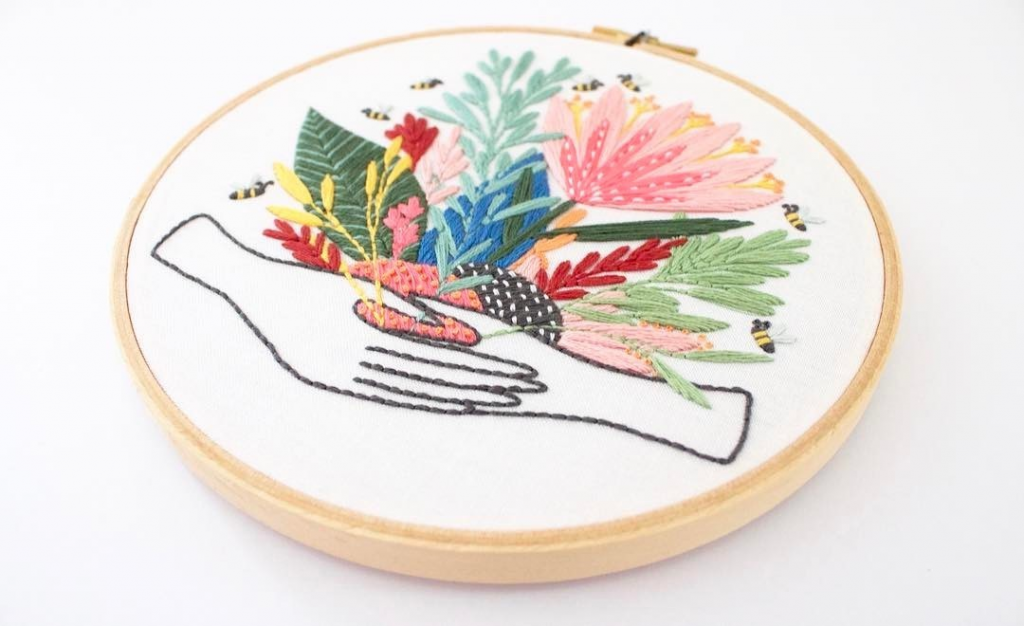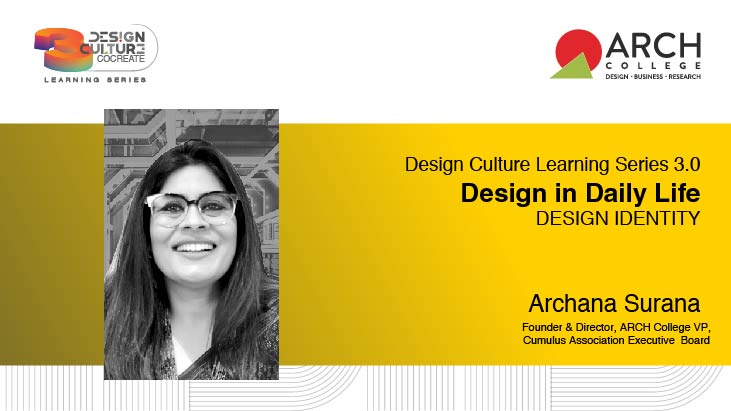Introduction:
Design is all around us, shaping our lives, experiences and influencing the way we interact with the world. In the session of the Design Culture Learning Series, third edition, Ms. Archana Surana, takes us on a captivating journey into the realm of design and its indispensable role in our everyday lives. As the Founder & Director of Arch College of Design & Business, she brings a wealth of knowledge and expertise to the table, offering valuable insights on how design impacts our daily routines and enhances our quality of life. From the functional yet stylish furniture in our homes to the intuitive user interfaces of our favorite apps, design touches every aspect of our existence.
The Collaborative Nature of Design:
Design plays a crucial role in our daily lives, creating opportunities for livelihood and fostering collaboration. In our modern society, design has become an integral part of various industries, from fashion and interior design to technology and architecture. It is through design that we can transform ideas into tangible products and experiences that improve our quality of life. Whether it’s the sleek design of a smartphone or the functional layout of a workspace, design influences how we interact with the world around us. It is through collaboration between designers, engineers, and other professionals that innovative solutions are created, addressing the challenges and needs of society. Design not only enhances functionality but also adds beauty and aesthetics to our everyday lives, making it an essential aspect of our existence. Embracing design in daily life opens up new possibilities and enriches our experiences, making each day more exciting and inspiring.

Designing for Functionality and Beauty:
Design is not just about functionality; it is also about creating beauty. The debate about whether beauty should take precedence over functionality in design has been ongoing. Some argue that the main goal of design is to be beautiful, while others insist that it should prioritize functionality. However, it is important to consider the role of aesthetics in design. Aesthetics refers to the visual appeal of a design and how it is perceived by individuals. The perception of beauty is not limited to humans; it is also ingrained in animals as a result of the brain’s reward system. Neuroaesthetics researcher Semir Zeki and philosopher Denis Dutton both argue that beauty is a fundamental aspect of human nature and serves an evolutionary purpose. Therefore, beauty in design is crucial as it creates truly beautiful experiences that forge a genuine value for users. A good design should not only be functional but also usable and beautiful, meaning it should be simple and clear to understand. By combining usability and beauty, designers can create designs that are both visually appealing and highly functional.

The Multidisciplinary Essence of Design:
When it comes to design, it’s not just about aesthetics, but also about the different perspectives that different subjects bring to the table. Science, for example, plays a crucial role in design through the use of vector graphics. These small graphics use math to display images and can be enlarged without losing quality, making them essential for cross-platform designs. On the other hand, commerce brings a practical perspective to design, focusing on effective communication and getting the desired results. Understanding design composition and layout, balance, proximity, and alignment are important elements in creating visually appealing designs that resonate with the target audience. Art, of course, is at the heart of design. It allows for creativity and expression, enabling designers to arrange design elements in a visually appealing way. Elements such as repetition and contrast are used to create a unified look and visual interest. Psychology and sociology add depth to design by considering personal and social perspectives. They help in understanding how design can influence emotions, behavior, and social interaction.

The Ethics of Design in the Digital Age:
In today’s digital environment, ethical considerations are more crucial than ever. The design and development of digital products and services can have significant impacts on users, society and the environment. It is important for companies to prioritize ethical considerations in order to increase consumer confidence, safeguard their reputation, and contribute to a more just and sustainable digital environment. Key tenets of ethical digital product design include user-centered design, transparency, security, social and environmental responsibility, empathy and inclusivity, and ethical usage of AI. By designing products and services that prioritize user welfare and interests while also achieving company goals, companies can create inclusive, accessible, and sustainable digital solutions. This involves considering the diverse needs of customers, protecting user privacy, and being open and truthful about data-gathering methods and utilization. Additionally, companies should give users control over their data and address ethical issues such as algorithmic bias and privacy concerns in the design and application of AI technologies. By focusing on user-centered design, privacy, accessibility, and inclusivity, companies can create morally acceptable digital products that have a positive impact on society and the environment.
Conclusion:
In conclusion, the word “design” is used in many ways and disciplines. Design as a field of study has been expanding rapidly and is now a multidisciplinary endeavor that involves several disciplines and focuses. For example, architecture, interior design, graphic design, industrial design, consumer experience, fashion design, and communications design are just a few of the design fields that fall under the broad umbrella of the word. It’s a vital tool that enhances functionality and appearance, and it’s also an opportunity for collaboration and creativity. Design touches every aspect of our existence and plays a major role in shaping it. These subsections will give an overview of different types of design, the importance of design in daily life, and the potential impact that it can have on society.
